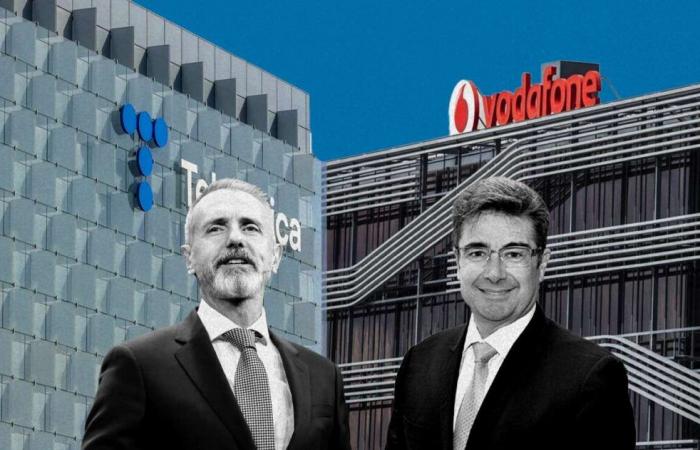Telefónica has among its priorities to be protagonist in a consolidation scenario of the telecommunications sector. The president of the company, Marc Murtra, has reiterated the message on different occasions, opening the door at the last Shareholders’ Board of national mergers in the key markets. Despite the complicated operation at the regulation level, in Spain Vodafone would be one of its best options.
The blue operator continues to lead the list of Spanish telecos in terms of income level, although Masorange occupies first position by number of clients after the merger between Orange and Masmobo is completed.
As for Vodafone Spain, he continues to hold third place and immersed in his process to be profitable again after being acquired by the British Zegona Fund.
It would be one of the most attractive options for a fusion with Telefónica, in addition to the Romanian firm of low Cost Digi, which month by month is gaining market share with its aggressive rates.
If all the regulatory conditions at the state and European level, something unlikely for now, the result would be a telecommunications giant that would dominate the Spanish market.
If we stick to the current capitalization of Telefónica, of about 24.7 billion euros, and the stock market value of Zegona -whose unique active is currently Vodafone Spain -, around 5.7 billion, the value of the resulting company would rise to 30.4 billion euros.
An assessment that would place it as one of the largest European telecus, behind Deutsche Telekom, which holds the throne with a value of 156,000 million euros at current market prices, and of the French Orange, with a capitalization of 32,000 million.
The joint billing of both companies would rise above 14.5 billion euros. Telefónica closed the last year with an income in Spain of 12,791 million, to which we would have to add the more than 1.8 billion that Vodafone Spain has billed since it is owned by Zegona. While the objective of the investment fund is to return to 4,000 million in revenues.
The fusion of Telefónica and Vodafone would take 45% of the market in the mobile segment
Beyond the business figure, it is worth highlighting the bulky debt that this hypothetical company resulting from the merger could have, which clashes with one of the fundamental objectives for Murtra and its Promise of establishing a “financial discipline” in the company.
In this sense, Telefónica closed the 2024 exercise with a financial debt Net of 27,161 million, while long -term indebtedness Zegona remained around 3,800 million.
As for customers, the teleco that José Miguel García leads has about 11 million lines in the mobile segment and another 2.6 million in fixed broadband.
For its part, Telefónica has 16 million mobile lines and about 6 million in broadband, according to the latest data from the National Commission of Markets and Competition (CNMC).
Telefónica, through Movistar, controls a market share in the mobile segment of 26.37%, while Vodafone holds 19.22%. Together, the resulting company would control more than 45% of the market.
However, in this type of operations from Brussels they usually impose the so -called ‘remedies’ to avoid a market concentration that ends up harming competition.
In the case of Masorange, the European Commission imposed conditions for the merger for which the company had to detach from the infrastructure, including the mobile spectrum.
Another factor to consider is that of the numerous employees who would be in charge of the group in Spain. According to the annual report of Telefónica, the average of Teleco workers in the country for 2024 remained in the around 19,000, while that CNMC data reveals a total of 2,537 employees in Vodafone Spain.
It should be noted that both companies, in line with which the sector has been doing in recent years, have significantly cut their templates through several employment regulation files (ERE) and voluntary output plans.
In addition, in case of hypothetical fusion, the most common is that the resulting group end up undertaking a new template cut to eliminate duplicities and reduce costs.






